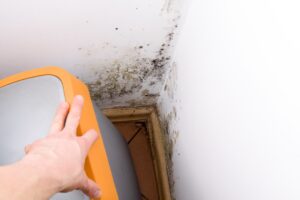There’s nothing that can put a damper on a nice day quite like a cold. But what if it’s more than just a cold and the symptoms seem to never go away? Well, if that’s the case, a mold allergy might be to blame.
Here’s how to tell the difference between the two and fix the problem if it’s a mold allergy.
What Is a Mold Allergy?
In simple terms, if someone’s allergic to mold, their immune system overreacts when they inhale mold spores. The symptoms are similar to those of a cold, and they include:
- Coughing
- Sneezing
- Stuffy or runny nose
- Watery or itchy eyes
Of course, mold allergy symptoms vary from one person to the next and can manifest as only one or a combination of a few. For some, a mold allergy can be so bad that they develop asthma or sinusitis because of it. Also, if the exposure to mold continues, it can cause hypersensitivity pneumonitis and allergic bronchopulmonary aspergillosis.
There are various factors that will determine if someone develops a mold allergy, but it usually comes down to genetics and over-exposure.
Knowing the Difference Between a Mold Allergy and a Cold
Unlike a cold, if the allergens aren’t removed, a mold allergy can last all year long. Also, the symptoms of a mold allergy will flare up even more when the weather outside is damp or if we’re standing close to mold spores.
What Is Mold and How to Identify It
Mold is a type of fungus that can have a black, white, green, orange, or purple color. It’s present both indoors and outdoors, but it thrives in damp environments and reproduces through spores that travel through the air.
In small amounts, mold is pretty harmless and can’t cause any of the health problems we’ve mentioned. However, once it starts growing and multiplying, long exposure to mold can make us sick.
That’s why, as soon as we see mold growing anywhere in our home, even if we’re not allergic to it, it’s vital that we remove it right away. Luckily, Mold Solutions can take care of the problem, and stop it from coming back again.
Where to Find Mold
As we mentioned earlier, mold can grow on almost any surface but it tends to stick to places like walls, fabrics, insulation, and so on. Also, it’s pretty common on bathtubs and showers, as well as ceiling tiles, dust, paints, and wood.
For those who suspect there’s mold in their home, we recommend checking underneath and inside refrigerators and humidifiers. Some other common places where mold tends to grow include:
- Attics
- Wallpapers
- Drywall
- Crawl spaces
- Stuffed toys and mattresses
- Upholstery
Getting Rid of Mold and Reducing Exposure to It
If we do have a mold problem in our homes, we should first start by eliminating sources of dampness. Often, the best place to start getting rid of them is in basements and crawl spaces.
Also, we recommend using a dehumidifier or an air conditioning unit with a HEPA filter all around the house. These two devices will help remove any excess moisture from the air, while cleaning up mold spores. What’s more, it’s key to keep all rooms in the home, especially the bathroom, well-ventilated.
We also suggest tossing out old recycled newspapers or books and cleaning out the gutters on a regular basis.
Final Thoughts
While mold exposure might not trigger cold symptoms in most people, having it around the house is not good in the long run. Even if we’re not allergic to it, our spouses, kids, and even pets might be. Also, if left untreated, mold will continue to grow and multiply until it takes over an entire space.
So for those who are struggling to get rid of the mold in their home or business, give Mold Solutions a call. We’ll perform an inspection, get rid of the problem, and make sure that it never comes back.








